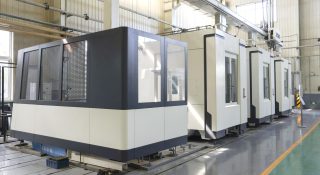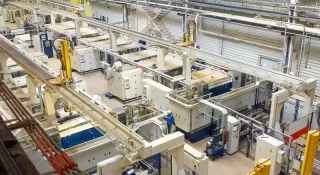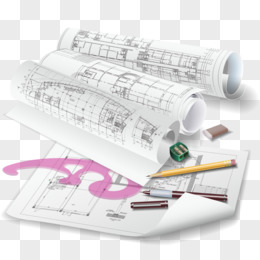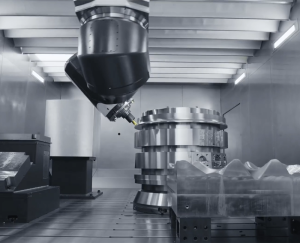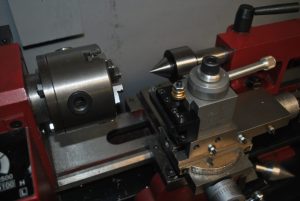What is End Milling?
End milling is a type of milling where the cutting tool’s rotation axis is perpendicular to the surface of the workpiece. It uses the cutting edges on the end of the tool to remove material and create flat surfaces.
What is An End Mill?
An end mill is a type of small cutting tool with a cylindrical handle and cutting edges on both the cylindrical surface and the end. This tool is used for milling flat surfaces, grooves, step surfaces, and shapes.

When to Use End Milling
A CNC milling machine or machining center can be used for end milling.If you want to do end milling, you need to get end mills for the milling operation, which can create various shapes like end surfaces, outlines, and grooves.End mills have cutting edges on both the end and the surface, allowing them to cut from multiple directions at the same time. This makes them suitable for machining complex shapes and contours.By choosing different types of end mills, such as fishtail end mills or ball end mills, you can create grooves. Additionally, end milling is suitable for large-scale mass production, producing high precision and smooth surface finishes.
Types of End Mills
There are various types of end mills, which can be classified based on their shapes, the number of flutes, and the materials they are made of.
Shapes
- V-bit End Mills
V-shaped milling cutters have cutting tips with angles of 60° or 90°. The sharp tips are suitable for cutting narrow and small grooves, and are often used for carving and precision machining.
- Corner Rounding End Mills
Corner rounding end mills have a curved blade tip that can round off sharp inside and outside corners of workpieces. They are often used for contouring and precision machining.
- Square End Mills
Square end mills have a sharp, flat square-shaped edge, good for machining 90° angles and edges. They are often used for face milling and side milling. Square end mills help improve the accuracy of rough machining.
- Ball End Mills
Ball end mills are often used for milling contoured surfaces due to their circular cutting edge, aiming to enhance the smoothness of the workpiece surface.
- Fishtail End Mills
Fishtail end mills have cutting edges concentrated at one end, forming a 45° angle. They are commonly used for cutting dovetail and keyway slots. Fishtail end mills can cut a wide range of materials, making them versatile for various types of machining.
Number of Flutes
The spiral groove on the cutting edge of an end mill is what we commonly refer to as the flute.The number of flutes affects the final outcome of the product.More flutes increase the milling cutter’s feed rate and improve the smoothness of the cutting surface. With fewer flutes, there’s more space for chip removal, reducing heat buildup.
- 2 Flute End Mills
2 Flute End Mills are suitable for processing softer materials.They have more space between the flutes, which helps them clear away chips efficiently.
- 3 Flute End Mills
3 Flute End Mills are quite unique as they possess good chip removal capabilities and machining abilities.
- 4 Flute End Mills
4 Flute End Mills are best suited for machining hard materials, but they have average chip removal capabilities.
Materials
End mills are commonly made of the following three materials:
- High Speed Steel End Mills(HSS)
Although high-speed steel end mills are cheaper, they have a slower processing speed and a shorter tool lifespan.
- Cobalt End Mills
Cobalt end mills perform better than high-speed steel end mills. They are more durable, work faster, but they are also more expensive.
- Carbide End Mills
Carbide end mills have very high heat resistance and wear resistance. They are very stable and can work with various materials. However, they are the most expensive option.
Applications of End Milling
End milling is widely used in manufacturing because it can work on flat surfaces,profiles, and grooves. Here are some examples:
- Aerospace:
End milling is used to manufacture complex shapes and structures of aircraft components.
- Automotive manufacturing:
End milling is used to fabricate car bodies and parts.
- Mold manufacturing:
End milling is used to shape contours, surfaces, and grooves, ensuring precision and smoothness of molds.
- Mechanical manufacturing:
End milling is used to process metals and various shapes and sizes of industrial parts.
Benefits Of End Milling Operations
End milling is a commonly used milling method, and it has many advantages in various aspects.
- Uses: End milling can be used to process end surfaces, outlines, contours, and grooves.
- Precision and accuracy: CNC milling guarantees precise positioning, high machining accuracy, and a smooth surface finish.
- Material range: End milling can process metal, wood, plastic, and composite materials.
- Product design: End milling can process complex structures like molds, sculptures, and casings.
- Energy consumption: End milling can handle multiple tasks, reducing tool change frequency, and decreasing energy consumption.
How to Use End Mills
- Step1: Check the cutting tool
Inspect the cutting tool for any damages, and replace it promptly if there are any.
- Step2: Secure the workpiece
You can use a securing device to hold the workpiece in place and prevent it from moving during the milling process.
- Step3: Set cutting parameters
Cutting parameters include cutting speed, feed speed, and cutting depth.Cutting speed and feed rate affect the quality of the cutting surface.Cutting too deep or too shallow can increase tool wear, reducing its lifespan. Additionally, product accuracy is affected, leading to potentially defective products.
- Step4: Clean up the chips
After machining, you need to clean the cuttings from the end mill.The buildup of chips can affect the performance of the end mill. You can use compressed air or a chip brush to clear the chips to ensure efficient cutting and prevent damage to the cutter and workpiece.
- Step6:Lubricate the tool
You can use cutting fluid or cutting oil to lubricate the tool, which helps reduce friction, prevent overheating, and extend the tool’s lifespan.
Conclusion
End milling can be used for face milling, contour milling, and groove machining. If you want to learn more about end milling, please contact us. Thank you for reading!
FAQs
- What Is the difference between end milling and face milling?
End milling has a larger range of operations compared to face milling. Face milling can only work on flat surfaces, while end milling can work on both end surfaces and contours.
- What are the disadvantages of end milling?
End milling operations are quite complex to set up. If not set up correctly, it can affect product quality and machine safety. Additionally, when cutting corrosive or highly hard materials, end mills are prone to wearing out.


